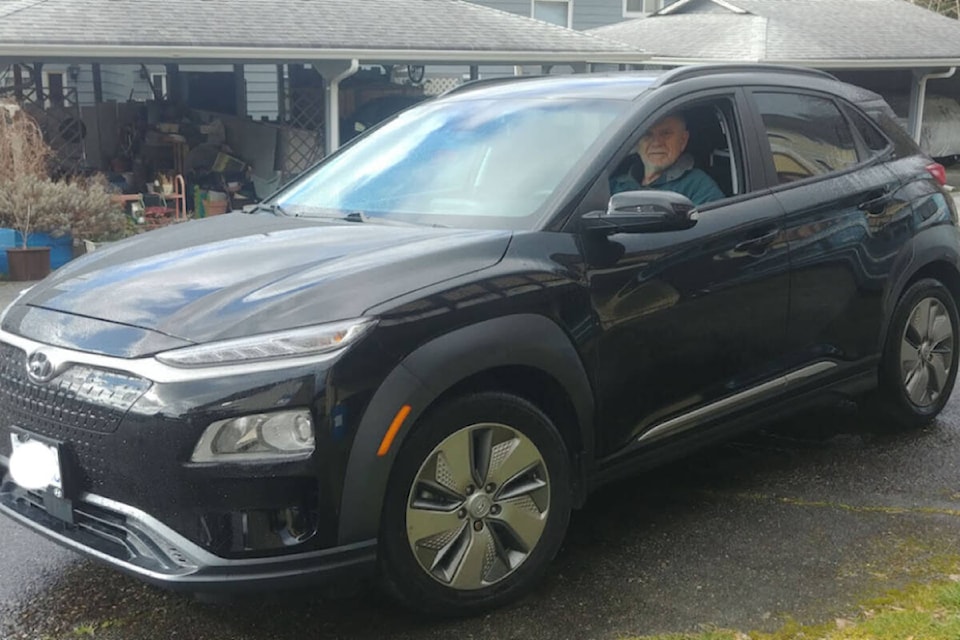WRITTEN BY DEBRA LYNN
Never mind the fact that you would be reducing carbon emissions that contribute to climate change, the cost of driving an electric car, according to Port Alice resident and EV owner Bob Leask is, “next to nothing!”
After buying a 2021 Hyundai Kona, Leask says, “I have no regrets at all, it’s a great car.” He adds that there is, “No such thing as an oil change with an EV, they’re almost no maintenance, there’s no spark plug, no oil.”
About the only thing Leask deals with in terms of maintenance are brakes and tires. He doesn’t even use the brakes very much because of the car’s regenerative braking feature.
“Instead just of burning up brake pads to make heat you’re actually engaging the motor, which acts as a generator, and it slows you down and puts the power back into the batteries.”
What Leask likes most about his car is the performance, noting it’s “a real hot rod. I mean it’s a very tame sort of car, it looks like your suburban grocery-getter. It doesn’t look like a sports car at all, but it goes, it really jumps.”
Tired of filling up your fuel-powered vehicle at the gas pumps for $80 or $100 or more? Leask says a “fill up” at an EV charging station will cost you a grand total of five or six dollars. It’s even free in some locations.
Leask has so far never been stranded without power, but he came close once. He tried to access a free charger at Buckley Bay, but it was broken down. The next one was at Qualicum Beach. He says, “I just barely made it. I’m lucky I didn’t run out.”
Leask suggests that the electric car might not be the best choice for someone who travels a lot, because of the time required to charge up the vehicle. For a normal six-hour trip to Victoria, he needs to add one hour for charging.
Leask bought his vehicle for approximately $40,000.
“I got it on a no interest financing so there’s no point in paying it off and so my monthly payment is not a whole lot more than what I was paying for gasoline before.” He also qualified for a total of $14,000 in subsidies from the federal and provincial governments.
Leask affirms, “The only thing against electric cars is how long the batteries are going to last and that’s a hard thing to predict because there are so many models and makers and different battery suppliers, and they don’t all make them the same way. Say, if you used the Tesla as a benchmark, the oldest Tesla’s are about 10 years old, and they’ve lost maybe about 10 per cent of their battery capacity after going a half million miles.”
Currently, Leask can go 400 kilometres on a single charge from home. Even if his range went down to 350 or 250, he says it wouldn’t be a problem, especially since more and more chargers are being installed every day.
A follower of EV news on YouTube, Leask says the newer Tesla’s have much improved batteries, called “million-mile batteries” that will likely outlast the car. He asserts, “A lot of the misconceptions about EVs are from 10 years ago, the biggest problem, I’d say, with buying an EV right now is that you know that in a few years you’re going to get something way better for less money.”
Have a story tip? Email: editor@northislandgazette.com
Like us on Facebook and follow us on Twitter.
